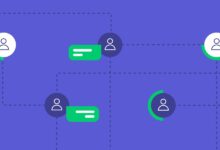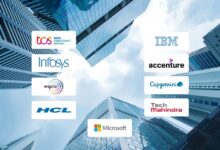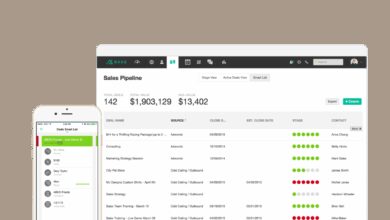PLG Based CRM: 7 Powerful Benefits You Can’t Ignore
Ever wondered how some companies effortlessly scale their customer relationships? The secret might lie in a PLG based CRM. It’s not just software—it’s a game-changer.
What Is a PLG Based CRM?

A PLG based CRM stands for Product-Led Growth Customer Relationship Management. Unlike traditional CRMs that rely heavily on sales teams to drive adoption, a PLG based CRM puts the product itself at the center of customer acquisition, retention, and expansion. This model empowers users to experience the product’s value firsthand—often through free trials or freemium models—before committing financially.
Defining Product-Led Growth (PLG)
Product-Led Growth is a go-to-market strategy where the product serves as the primary driver of customer acquisition, conversion, and expansion. Instead of relying on sales reps or marketing campaigns to push the product, companies design their software so intuitively that users can onboard, explore features, and derive value on their own.
According to ProductLed, organizations embracing PLG grow 2–3x faster than those using traditional models. This shift has redefined how SaaS companies approach customer engagement, and CRM tools are no exception.
- The product experience replaces lengthy sales demos.
- User onboarding is frictionless and self-guided.
- Customer success is embedded in the product design.
“In a product-led world, the best salesperson is the product itself.” — Wes Bush, Author of Product-Led Growth
How PLG Differs from Sales-Led and Marketing-Led Models
Sales-led CRMs depend on human interaction—sales reps guide prospects through demos, negotiations, and contracts. Marketing-led models use content, ads, and campaigns to generate leads. In contrast, a PLG based CRM reduces dependency on both by enabling users to discover value independently.
For example, while Salesforce (a sales-led CRM) requires setup and training, a PLG based CRM like HubSpot or Close allows users to sign up, import contacts, and start engaging within minutes. The emphasis is on speed, simplicity, and immediate utility.
Why PLG Based CRM Is Revolutionizing Customer Engagement
The rise of digital-first consumers and remote workforces has accelerated the need for agile, user-centric tools. A PLG based CRM meets this demand by aligning product functionality with customer behavior. It’s not just about managing contacts—it’s about creating an experience so compelling that users naturally want to upgrade, refer others, and stay loyal.
User-Centric Design Drives Adoption
One of the core strengths of a PLG based CRM is its focus on usability. These platforms are built with the end-user in mind, ensuring that even non-technical team members can navigate the system without extensive training.
Features like drag-and-drop interfaces, in-app tooltips, and automated workflows reduce friction during onboarding. When users can quickly see results—like tracking a lead or scheduling follow-ups—they’re more likely to adopt the tool fully.
As reported by Gartner, companies with high user adoption rates in CRM systems achieve 5x higher ROI than those with low engagement.
Data-Driven Insights Without Complexity
Traditional CRMs often overwhelm users with complex dashboards and fragmented data. A PLG based CRM simplifies analytics by surfacing only the most relevant insights at the right time.
For instance, instead of requiring users to build custom reports, a PLG CRM might automatically highlight which leads are most engaged based on email opens, link clicks, and meeting attendance. This proactive intelligence helps sales teams prioritize efforts without needing a data analyst.
- Real-time performance tracking
- Automated lead scoring
- Behavioral nudges for next steps
“The best CRMs don’t just store data—they act on it.” — TechCrunch Analysis, 2023
Top Features of a Modern PLG Based CRM
To truly deliver on the promise of product-led growth, a PLG based CRM must include specific capabilities that enable autonomy, scalability, and continuous value delivery. Let’s explore the essential features that set these platforms apart.
Self-Service Onboarding
A hallmark of any PLG based CRM is seamless onboarding. Users should be able to sign up, import data, and start using core features within minutes—not days.
This includes guided tours, video walkthroughs, and contextual help that appear only when needed. For example, when a new user logs in for the first time, the system might prompt them to connect their email or sync their calendar—key actions that unlock immediate value.
Platforms like Zoho CRM offer AI-powered assistants that guide users step-by-step, reducing reliance on customer support.
Freemium or Free Trial Access
Offering a free tier or trial is central to the PLG strategy. It lowers the barrier to entry and allows potential customers to test the product risk-free.
In a PLG based CRM, the free version typically includes core functionalities like contact management, task tracking, and basic reporting. Advanced features—such as automation, integrations, or AI insights—are gated behind paid plans, creating a natural upgrade path.
Research from OpenView Partners shows that freemium models can increase conversion rates by up to 300% compared to traditional lead-gen funnels.
Embedded Analytics and AI Recommendations
Modern PLG based CRMs go beyond static reports. They use machine learning to analyze user behavior and suggest actions that improve outcomes.
For example, if a sales rep hasn’t followed up with a hot lead in 48 hours, the CRM might send a notification: “This lead opened your last three emails—send a quick check-in?” Or, it could recommend the best time to call based on the prospect’s timezone and past engagement patterns.
- Predictive lead scoring
- Next-best-action suggestions
- Churn risk alerts
“AI isn’t replacing salespeople—it’s making them smarter.” — Forbes, 2024
How PLG Based CRM Enhances Sales Team Performance
Sales teams are under constant pressure to close deals faster and with fewer resources. A PLG based CRM supports this goal by automating routine tasks, improving visibility, and enabling data-backed decisions—all without requiring extensive training or IT support.
Automated Workflows Reduce Manual Effort
One of the biggest time sinks for sales reps is manual data entry and follow-up scheduling. A PLG based CRM eliminates much of this burden through automation.
For example, when a lead fills out a form on your website, the CRM can automatically create a contact, assign it to the right rep, and trigger a personalized email sequence. Follow-up tasks are added to calendars, and reminders ensure nothing falls through the cracks.
According to a study by Nucleus Research, companies using CRM automation see a 14.6% increase in sales productivity.
Real-Time Collaboration Across Teams
In a distributed work environment, collaboration is critical. A PLG based CRM acts as a single source of truth where sales, marketing, and customer success teams can share updates, notes, and files.
Features like shared pipelines, activity feeds, and @mentions keep everyone aligned. For instance, if marketing launches a new campaign, sales can instantly see which leads came from it and tailor their messaging accordingly.
This transparency reduces silos and ensures a consistent customer experience across touchpoints.
Performance Tracking and Coaching Tools
Managers can use a PLG based CRM to monitor team performance in real time. Dashboards show key metrics like call volume, email response rates, and deal velocity.
Beyond reporting, some CRMs offer built-in coaching features. For example, after a sales call, the system might transcribe the conversation, highlight objections, and suggest talking points for future interactions.
- Activity tracking without manual logging
- Deal stage progression analysis
- AI-powered feedback on communication style
“Visibility into rep activity is the first step toward improvement.” — Sales Hacker
Integrations That Make PLG Based CRM Even More Powerful
No CRM operates in isolation. The true power of a PLG based CRM comes from its ability to integrate seamlessly with other tools in your tech stack—email, calendar, marketing automation, customer support, and more.
Email and Calendar Syncing
One of the most basic yet impactful integrations is with email and calendar platforms like Gmail, Outlook, or Google Calendar.
With two-way syncing, every sent email, meeting, or task is automatically logged in the CRM. This eliminates double data entry and ensures a complete activity history for each contact.
For example, if a rep sends an email from Gmail, the CRM captures it, updates the lead’s timeline, and tracks whether the recipient opened or clicked any links.
Marketing Automation Platforms
Integrating with tools like Mailchimp, ActiveCampaign, or HubSpot Marketing Hub allows for closed-loop reporting between marketing and sales.
When a lead clicks on a targeted ad or downloads a whitepaper, that behavior is reflected in the CRM. Sales reps can then prioritize leads based on engagement level, increasing conversion chances.
These integrations also enable personalized nurturing sequences. If a lead abandons a demo signup, the CRM can trigger a follow-up email with a direct booking link.
Customer Support and Helpdesk Tools
Linking your PLG based CRM with support platforms like Zendesk or Intercom creates a unified view of the customer journey.
Sales teams can see if a prospect has opened support tickets or interacted with chatbots, giving context before outreach. Conversely, support agents can access sales history to avoid duplicating efforts or miscommunicating pricing.
- Unified customer profiles
- Automated handoffs between departments
- Escalation triggers based on behavior
“The line between sales and service is blurring—and CRMs must adapt.” — Harvard Business Review
Challenges and Limitations of PLG Based CRM
While the benefits are compelling, adopting a PLG based CRM isn’t without challenges. Organizations must be aware of potential pitfalls and plan accordingly to maximize success.
Data Security and Compliance Risks
With increased automation and third-party integrations, data security becomes a top concern. A PLG based CRM often collects sensitive customer information, including emails, call recordings, and behavioral data.
Companies must ensure compliance with regulations like GDPR, CCPA, or HIPAA, depending on their industry and region. This includes implementing role-based access controls, encryption, and audit trails.
Failure to do so can result in fines, reputational damage, and loss of customer trust.
Over-Reliance on Automation
While automation improves efficiency, it can also lead to impersonal interactions. If every follow-up is templated and every task is auto-assigned, prospects may feel like they’re dealing with a robot—not a human.
The key is balance. A PLG based CRM should enhance, not replace, human connection. Personalization tokens, dynamic content, and AI suggestions should support reps, not dictate their every move.
Scaling Beyond SMBs
Many PLG based CRMs are designed for small to mid-sized businesses. As companies grow, they may hit limitations in customization, reporting depth, or enterprise-grade features.
For example, a startup might thrive on Close or Pipedrive, but a global enterprise may require the scalability of Salesforce or Microsoft Dynamics. Transitioning later can be costly and disruptive.
- Custom workflow limitations
- Limited API access in lower tiers
- Higher-tier pricing for advanced features
“PLG works best when the product fits the market—and the market fits the product.” — SaaS Growth Report, 2023
Future Trends Shaping PLG Based CRM Evolution
The landscape of customer relationship management is evolving rapidly. As AI, automation, and user expectations advance, PLG based CRM platforms are poised to become even more intelligent, intuitive, and indispensable.
AI-Powered Predictive Selling
Future PLG based CRMs will leverage AI not just to report on past behavior, but to predict future outcomes. Imagine a system that forecasts which deals are likely to close, recommends optimal pricing, or identifies at-risk accounts before churn occurs.
These predictive models will be trained on vast datasets, including historical win/loss patterns, market trends, and even sentiment analysis from emails and calls.
Companies like Salesforce are already integrating Einstein AI to deliver such capabilities, and smaller PLG players will follow suit.
Voice and Conversational Interfaces
As voice assistants and chatbots become more sophisticated, PLG based CRMs will incorporate conversational interfaces. Reps could ask, “What should I do next?” and get spoken recommendations.
Similarly, prospects might interact with AI-powered chatbots that qualify leads, book meetings, and update CRM records in real time—without human intervention.
Hyper-Personalization at Scale
The next frontier is delivering personalized experiences to thousands of customers simultaneously. A PLG based CRM will use behavioral data, firmographics, and intent signals to tailor content, timing, and channel for each individual.
For example, if a lead frequently reads blog posts about pricing, the CRM could trigger a personalized email with a discount offer or a case study on ROI.
- Dynamic content generation
- Real-time personalization engines
- Behavior-triggered workflows
“The future of CRM is not just smart—it’s empathetic.” — MIT Technology Review
What is a PLG based CRM?
A PLG based CRM is a customer relationship management system built on a product-led growth model. It allows users to experience the product’s value through self-service onboarding, free trials, or freemium access, reducing reliance on sales teams for adoption and expansion.
How does a PLG CRM differ from traditional CRM?
Traditional CRMs are often sales-led, requiring demos and manual setup. A PLG based CRM emphasizes ease of use, instant value, and organic growth through user experience rather than sales pressure.
Can PLG based CRM work for enterprise companies?
Yes, but with caveats. While many PLG CRMs target SMBs, some are scaling to meet enterprise needs. Companies should evaluate factors like security, customization, and integration depth before adoption.
What are the best PLG based CRM tools available?
Popular options include HubSpot CRM, Close, Zoho CRM, Pipedrive, and Freshsales. Each offers self-serve onboarding, freemium models, and intuitive interfaces that align with PLG principles.
How do I measure the success of a PLG based CRM?
Key metrics include user adoption rate, time-to-value, feature usage, conversion from free to paid, customer retention, and net promoter score (NPS). These indicators reflect how well the product drives growth on its own.
Adopting a PLG based CRM isn’t just about switching software—it’s about embracing a new philosophy of growth. By putting the product at the heart of customer engagement, businesses can scale faster, serve better, and build stronger relationships. While challenges exist, the long-term benefits of increased adoption, lower CAC, and higher satisfaction make it a strategy worth exploring. The future of CRM is not just automated—it’s intuitive, intelligent, and user-driven.
Further Reading:








